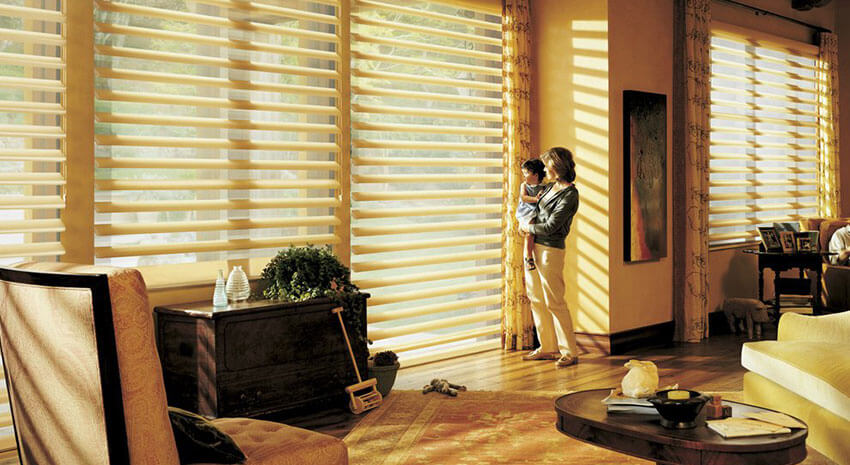Venetian Blinds, Wooden Blinds, or Faux Wood Blinds.

Wooden blinds, also known as Venetian blinds or Faux Wood blinds, are a classic window covering that can add warmth and sophistication to any room. They are made up of several horizontal wooden slats that are connected by corded pulleys, allowing you to easily adjust the amount of light and privacy in your space. These blinds come in various finishes, including solid oak, faux wood, and painted wood, and are available in 25mm, 35mm, and 50mm sizes. Installation is easy, as wooden blinds are typically suspended using cords or strips of tape. You can rotate all the slats in unison by almost 180 degrees, which allows you to control the amount of light and privacy you want. Plus, lift cords in each slat allow you to raise and lower the blinds as needed. Slat width ranges from 16mm to 120mm, with 25mm being the most common width of choice by interior designers and homeowners. The history of Venetian blinds dates back to the 18th century, and they have remained popular over the years. In fact, during the late 19th and early 20th centuries, Venetian blinds were a common feature in commercial buildings due to their ability to regulate air and light. Even today, they continue to be a popular choice for homeowners and designers alike, with notable installations including the Empire State Building and Rockefeller Center’s RCA Building in New York City. Choose wooden blinds for a timeless and functional window covering that will elevate your space.
Book an at-home free estimate by Clicking Here or Call us at 863-210-7987
